#Töregene
Link
Women have authority. They do certain things. You check in with them. You ask their advice. You listen to them when they speak. This is normal.
#badass women in history#Töregene#Börte#history#Mongolia#group relations#perspective matters#people being awesome
34 notes
·
View notes
Text
I think it's unintentional on the part of the author Tomato Soup, but Fatima and Töregene in Volume 2 of A Witch's Life in Mongol make me feel like Sans early on the Genocide Route of Undertale:
well, i'll be straight-forward with you. my brother'd really like to see a human... so, y'know, it'd really help me out... if you kept pretending to be one.
#A Witch's Life in Mongol#Tomato Soup#historical manga#Fatima#Töregene#Töregene Khatun#Undertale#Sans#quotes
2 notes
·
View notes
Text
writing a paper on the history of women in the mongol empire and i think i have typed more umlauts in the last 7 pages than i have in my entire college career. the english language is so weak we need to shake things up with a few ö and ü and ï and maybe even the occasional ë.
#it is so satisfying to type the umlaut in börte or töregene#the best name is güyük though because that has TWO#i did recently meet an anaïs but she usually spells it without the umlaut#anyway back to my paper this is your random linguistics thought of the day#oh also brontë! that's a good last name. but i'm pretty sure they deliberately added the ë it wasn't originally spelled like that#pie says stuff#pie goes to college
4 notes
·
View notes
Text
Tenmaku no Jadoogar: A Witch’s Life in Mongol - 天幕のジャードゥーガル
HISTORICAL, DRAMA
Tenmaku no Jadoogar: A Witch’s Life in Mongol by Tomato Soup
(2 volumes, ongoing)
JP only. The first 5 chapters are up for free in JP here.
Links to my other manga posts here
Hi, Fatimah here to talk more about the story of Fatima >:)

Definitely check out my post for volume one because I worked really hard on that and there's lots of cool info there and I don't want to repeat myself here.
This post will be broken up into: Brief Volume Two Summary - My Thoughts - Let's Talk Religion (Again) - The "Middle East" Is Actually a Colonizer Term
Let's go!
Brief Volume Two Summary
***SPOILERS FOR VOLUME TWO***
*
*
*
8 years have passed since Fatima was taken by the Mongols. She has been unable to retrieve the book that was stolen even though she's had it in her hands over and over. Ögedei has been crowned the new Khan after the death of Ghengis Khan. Sorghaghtani has asked Fatima to go spy on Chagatai. While trying to get her to infiltrate, she ends up at Töregene's tent instead where Fatima is accused of stealing her "Jada Stone".
We learn about Töregene's back story and her forced integration into the Mongol Empire, losing those she loved, and her marriage to Ögedei. Töregene and Fatima bond over their shared trauma and hate towards their captures. They start working together on upending the empire.
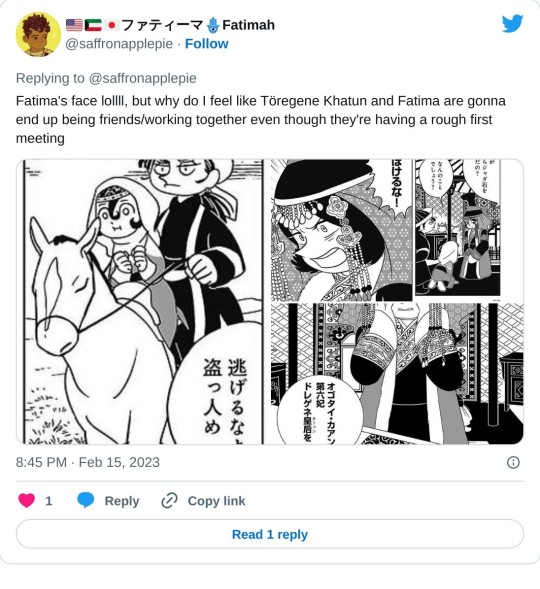
And work together they are! Looks like they're gonna raise hell in the empire.
Töregene attends a meeting she normally skips, and there Ögedei Khan proposes that the nomadic Mongols build a city. Everyone is against the idea as they were expecting to discuss the invasion of the eastern country, Kin (also known as the Jin State). Ögedei says that he wants to use this new city for manufacturing, to gather craftsmen from around the world, and as a center for trade. They then discuss their war plans for the siege on the Jin State.
Töregene shares all the information she's learned at the meeting with Fatima, and they discuss potential weaknesses in the Mongol Empire that could cause its downfall.
*
*
*
***END OF SPOILERS FOR VOLUME TWO***
My Thoughts
I'm excited to see what Fatima and Töregene do and what their dynamic is going to be like.
I do wish that some info was incorporated a little more subtly. I'm not a fan of info being dumped for the sake of the reader. Author Tomato Soup clearly has put a lot of care into researching for this series, so I just wish they took that extra step to weave the information in more naturally.

They put a lot of care into the visual language, such as the shape of text bubbles (right pic), so seeing charts like this (left pic) feels visually inconsistent.
Let's Talk Religion (Again)
Once again, I want to put the disclaimer that I am NOT a scholar, this is just what I know and my understanding so please don’t quote me. I probably have to gloss over and simplify a lot because there’s… too much.
At the beginning of the volume, there is mention of Islamic meat slaughtering practices (halal meat) compared to the customs of the Mongols.
I think halal is a word a lot of people have heard, especially in recent years, but what does it even mean?
Halal is anything that is permissible in Islam. Haram is anything NOT permissible in Islam, or sins. There are also things that are makrooh (strongly discouraged but not a sin) and mustahab (recommended but not obligatory) and so on.
How does that translate to food?
Halal foods are foods that are permissible for Muslims to consume. Most things are okay for consumption, so it's easier to list what isn't allowed/haram. You might be familiar with the fact that Muslims do not drink alcohol or eat pork. There's a reason for all this, but I'll get to that later. Some other things that are haram to consume are the following:
Carnivorous/predatory animals (Pigs are omnivores, so they technically fall into this category as well. Only herbivores are permissible to consume.)
Animals that died from disease.
Incests, reptiles, and "pests" (such as mice/rats).
These next points are debated depending on what scholar you follow:
Some Muslims only eat fish that have scales, while some believe pretty much any seafood that doesn't fall into the previous categories is fair game (I call this The Great Muslim Seafood Debate loll).
Some Muslims believe you should not eat "beasts of burden" such as horses/mules.
Exceptions to these rules are if you are in a situation where you are left with no other choice but a haram food option, then you will not be guilty of sin for consuming. God never wants to place unreasonable burden on his creation. One of the most important things in Islam is intention, and God can see what's in your heart.
Okay, so you have something that clears these rules. But! That doesn't automatically make it halal. When it comes to consuming animals, the slaughtering of the animal has to be done in a specific way. Let's break it down:
Land animals -
When slaughtering a land animal, it must be done in a specific way so that it becomes halal meat:
The animal must be well-fed and given water before slaughter.
They must be soothed and calm. You cannot slaughter if the animal is fearful and agitated.
Other animals must not witness the slaughter as it can frighten them.
The slaughter must be performed using a very sharp knife to cut the throat. Doing this will cause the animal to immediately lose consciousness and thus will not feel pain. It must be done as quickly, painlessly, and humanly as possible.
Do not allow the animal to see the knife as it can frighten them.
The slaughter must be performed by a Muslim. They must recite a prayer before cutting the throat and do so while facing Mecca.
The blood must be drained from the animal's body after the neck is cut as disease/toxins/etc. can live in the blood. This makes the meat cleaner and more sanitary.
You cannot stun an animal before slaughter (such as hitting it on the head or zapping it with electricity).
In cases where you are hunting, you can use arrows, guns, or hunting birds when hunting an animal that cannot easily be caught for traditional methods of slaughter.
Hunting is only allowed with the intention of hunting for food, not sport.
You must say a prayer when shooting.
If the animal does not die immediately during the hunt, you should slaughter them as quickly and painlessly as possible and not unnecessarily prolong any suffering.

"There's a reason for cutting the neck and slaughtering this way, you know..."
I still don't like the way this info is visually presented. I feel like it could have been done more naturally instead of breaking the immersion to explain things to the reader. But the info is correct!
Animals of the sea -
The animal must die outside of the water (for example, using "blast fishing" or "fish bombing" is prohibited — it's horrible for the environment and does not discriminate on what fish are killed. Even animals like dolphins and turtles can get caught in the blast and die. Coral reefs and such can end up damaged as well. Also, according to Wikipedia "For every ten fish killed, only one or two float to the surface, due to damage caused to their otherwise buoyant internal air bladders. The rest sink to the bottom." This causes a lot of waste. Using this method, you also wouldn't know if a fish was dead from disease and already floating around or if it was from the blast.)
They should not be descaled/skinned while still alive (this is the same for land animals).
I know this might seem like a long and tedious list, but there is a reason for these halal food guidelines. The purpose is to not cause any unnecessary pain to animals, be as humane as possible, and not consume anything that would be bad for your health. Health is of the utmost importance in Islam. I think we can all agree that alcohol is not great for you. There are studies being done about the effects of consuming carnivorous animal meat, pork, and so on not being the greatest for you either, etc. Again I want to reiterate, I'm not judging anyone. You do you, I literally don't care. I'm not saying you're wrong and terrible for consuming these things.
But yeah, I think that's everything for relevant religious stuff that came up in this volume.
I'd like to use the setting of the series as a springboard to discuss something I never see anyone talk about — and I think we should.
The "Middle East" Is Actually a Colonizer Term
Before you roll your eyes at me, just hear me out.
A while back, Drew Mackie, the guy behind Thrilling Tales of Old Video Games where I work as a translator/consultant, sent me an email with some questions for a post he was working on. Long story short, he wasn't sure how to refer to these Nintendo characters who looked stereotypically "Middle Eastern".
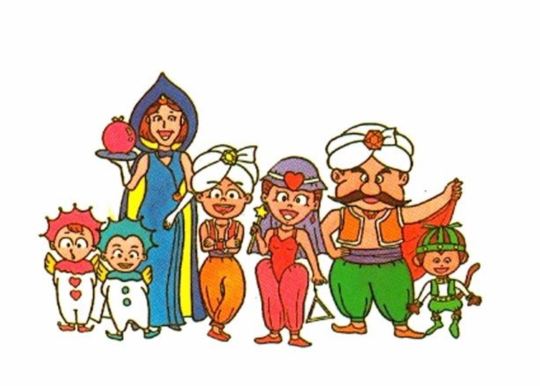
Big sigh... I am TIRED of seeing character designs like this... Check out Drew's post here! He writes lots of cool articles that are super interesting!
Luckily for him, this was VERY MUCH my lane. Please entertain my oncoming rant about the term "Middle East" guys. I swear I have a point to make.
When Drew sent me the picture of these Nintendo characters, I groaned. When I sent my brother the picture, he got real ticked off.
I don't know where it started exactly, but everyone just decided that this is what the "Middle-Eastern-look" is. To me, it just looks like Disney's Aladdin — in which what I mean is that this is what Westerners decided the whole region between the far East and far West looks like and everyone was like, "Yeah sure, okay." This look that is so prevalent looks like some bizarre mash-up of West Asia, South Asia, and North Africa to me. That's quite a range of regions to group together...
I always found it weird that this was the "Middle-Eastern-look" since it looked nothing like Kuwaiti traditional wear to me (or any other traditional clothing I'm familiar with tbh). And yet, it's like everyone was telling me, "Yes, this is what you wear. This is what you look like."
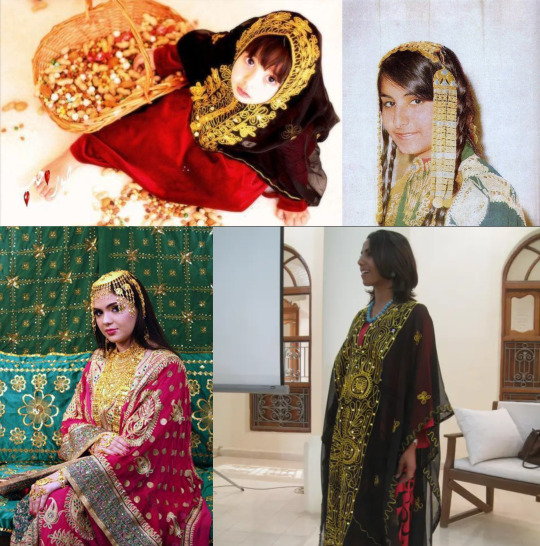
Some actual Kuwaiti traditional clothing. You can see a lot of influence from other regions due to trade. The headdresses remind me of the ones you see in Tenmaku no Jadoogar! I believe Turkey has something similar as well! And idk about you guys, but it doesn't look like the aforementioned "Middle-Eastern-look". That is some unholy mishmash of "brown culture" from the perspective of those outside of said culture.
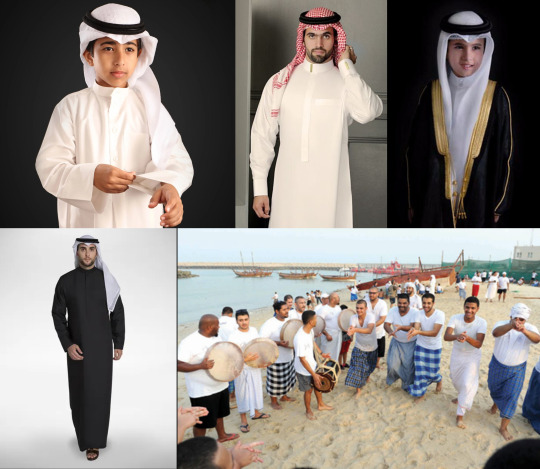
Bottom right pic is what ship builders and pearl divers wore. My grandpa was a pearl diver! The fabric tied around their waist that's different colors and patterns is called a wizar. Dishdasha (the men's robe) can come in various colors. White is worn in the summer and darker colors in the winter. The red qitra (the fabric on the head) is also for winter as it's thicker and warmer than the white one. You can mix and match, especially between seasons to suit you depending on the weather. The black and gold overcoat is a bisht and it's to dress up the dishdasha, usually for special occasions.
Honestly, I almost never use the term "Middle East" myself for a few reasons (and now that I think about it, most of my family and friends don't really either. Maybe that's just me and the people around me idk. I know some people from the region do use it but I'm talking about the people I personally know). Like, what does the term even mean? I mean, it's not a continent, but everyone seems to act like it's the eighth continent. I get that continents are usually further broken up into regions to help be more specific about similar groups since continents are, well, huge and cover a lot.
The problem is, the "Middle East" is wayyyy too big and broad, and it covers areas that often don't have as much in common as many would believe, and it spans multiple continents (Are there similarities? Yeah of course, but like...). It feels like they said, "All you guys talk Arabic so we'll group you. Oh, and throw Iran and Turkey in there because same thing, right?" But then what about Libya or Morroco, which are North African Arab countries? By some definitions, they're not considered to be in the Middle East even though they "fit" but Egypt, another North African Arab country is? I could go on, but idk it all seems very arbitrary.
Yes, these regions did have a lot of trade going on with the Silk Road so you'll see common things shared across various countries along this trade route, but many people have just mushed them together and decided it's all the same.
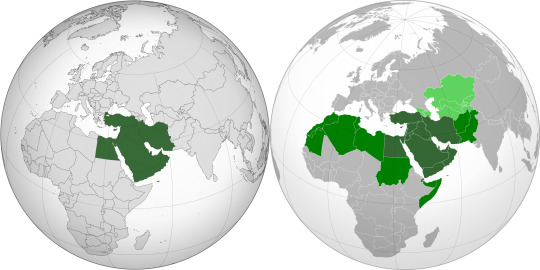
Which Middle East is the Middle East-est Middle East?
Where did the term come from? -
The term "Middle East" may have originated in the 1850s in the British India Office. However, it became more widely known when American naval strategist Alfred Thayer Mahan used the term in 1902 to "designate the area between Arabia and India".
Which reads to me like, because some colonizers said so.
There's also a term that's kinda worse I recently learned about called the "Greater Middle East" which Wikipedia describes as:
The Greater Middle East is a political term, introduced in March 2004 in a paper by the Carnegie Endowment for International Peace as a part of the U.S. administration's preparatory work for the Group of Eight summit of June 2004, denoting a vaguely defined region called the "Arab world" together with Afghanistan, Iran, Israel, Turkey, and several other neighboring countries that have cultural ties.
I recommend reading the rest of the paragraph on Wikipedia for yourself. It comes off as incredibly nope. It's gross.
But even this description says, "denoting a vaguely defined region" which is what I mean when I say it's arbitrary. I feel like it's too often used as a blanket term with negative connotations.
Personally, if I'm talking about Arab countries, I say "Arab" but it also depends on what I'm talking about. If it's a shared Arab thing, then Arab is fine, but if it's a cultural thing that's unique to Sham Arabs for example, I don't use it as broadly. Arab countries vary A LOT. Many assume they're all the same, but truth be told, Arabs get culture shock from each other and have a lot that's different — including neighboring nations. Sometimes we don't even understand each other because of how different dialects can be across different regions.
Obviously, I don't expect everyone to know all this, but I think the way we divide up the region and how we refer to it could get a makeover.
The world seems to be okay with dividing up, for example, Europe into smaller sub-regions that make some kind of sense — like Northern Europe, Western Europe, etc. But we don't commonly do that for the "Middle East" — nothing that makes any kind of sense. "Middle East" because it's halfway to East Asia in relation to the West? Because the colonizers said so?
Personally, I generally refer to myself as West Asian and I always check "Asian" on forms, even when they try to convince me Arabs are apparently white as if that makes sense (meanwhile my dad is perceived as being mixed race/black in America and he's not even close to being the darkest on his side of the family. While I am pale, no one would perceive me as white). Like I mentioned in my volume one post, I'm not only Kuwaiti Arab. I'm also Irani which is Persian and NOT Arab, plus some Turkish ancestry (also NOT Arab). Allllll of those countries are in West Asia. West Asia is already a term! Why don't we use it?????? We should all know why by now if you've gotten this far in the post.

Map of West Asia, which is already a thing. An actual geographical term. Wow. Too many people don't realize these countries are indeed in Asia. Crazy how Asia isn't just Japan, China, and Korea, huh.
I'm sure there are "Middle Easterners" who don't care, and I'm not here to tell those people how they should identify. That's up to them. DO NOT tell people how they should identify because that is deeply personal, and who the hell are you to tell them who they are?
But for the rest of you, consider adopting less colonizer vocabulary maybe? A lot of my family and friends find the term to have racist connotations since it's almost always used in a not-so-great context and it's from the view of the West. We HAVE other terms that we can use! Time to brush up on our geography and unlearn some nonsense kids.
I'm done. Thanks for coming to my TED talk❤️
✨And once again✨
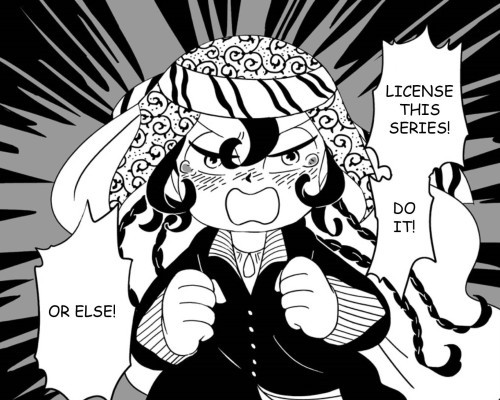
I await your email publishers, my resume is ready… [email protected]
🧿🪬🧿🪬🧿🪬🧿🪬🧿🪬🧿🪬🧿🪬🧿🪬🧿
—————————–
If there’s any Japanese-only manga you want me to check out, let me know! No promises, I’ll only read what I’m interested in, but I’ll take suggestions into consideration. Preferably, shorter manga or newer manga with a few volumes out since I like to take breaks from longer series I’m reading :)
#tenmaku no jadoogar#a witch's life in mongol#manga#manga recs#manga recommendations#shoujosei#josei manga#manga discussion#kono manga ga sugoi#漫画#おすすめ#天幕のジャードゥーガル
17 notes
·
View notes
Text
REGENTES
Regentes poco conocidas
Juana de Austria
Regente de España de 1554 a 1559
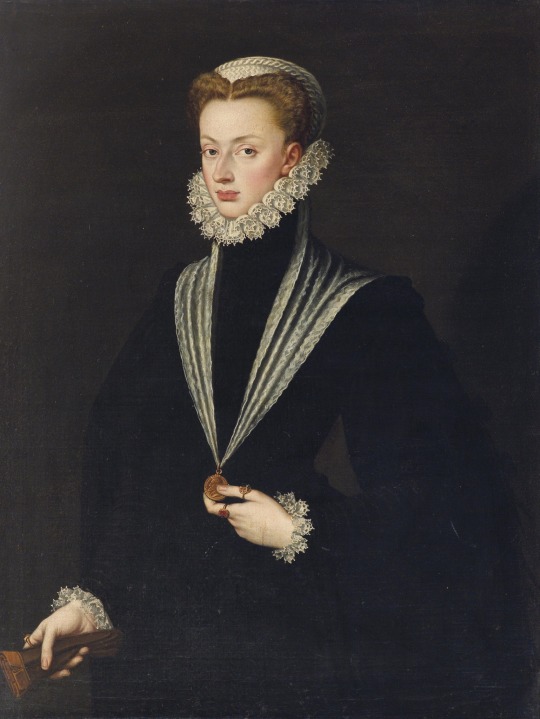
Maham Anga
Regente del Imperio Mogol de 1560 a 1562

Aelia Sophia
Regente del Imperio Bizantino de 573 a 578
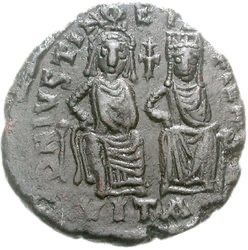
Vijaya- Bhattarika
Regente de Chalukya de 650 a 655
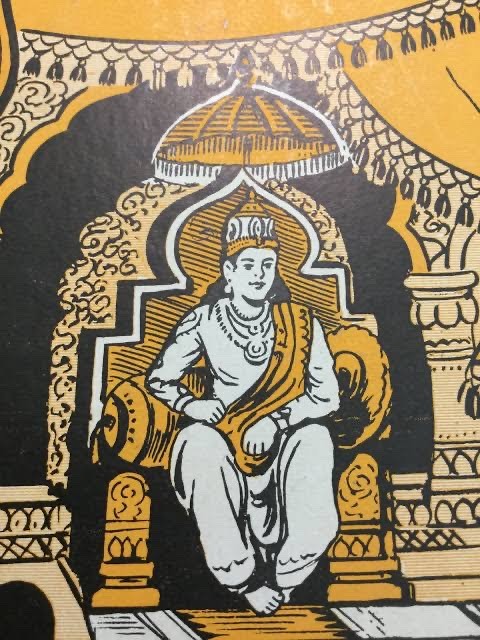
Emperatriz Hexi
Regente de China de 106 a 121
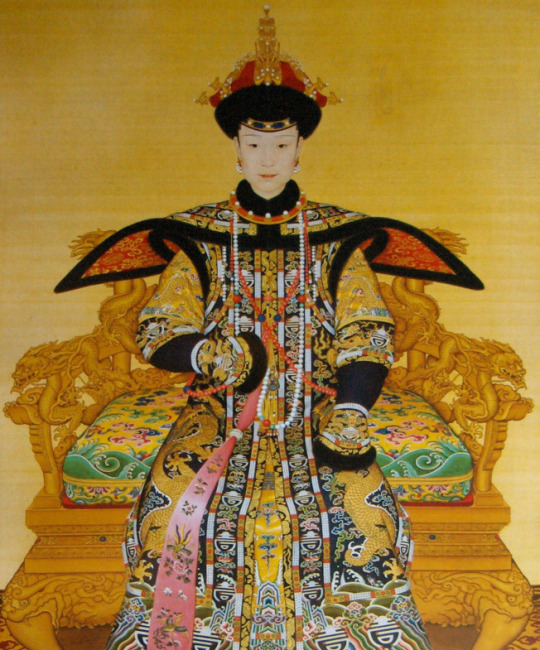
Caterina Cybo
Regente de Camerino de 1527 a 1535
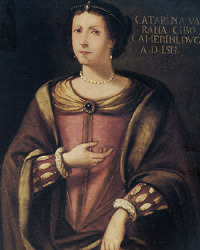
Isabella Jagellón
Regente del Principado de Transilvania en dos ocasiones , su primera regencia fue de 1540 a 1550 y la segunda regencia de 1556 a 1559
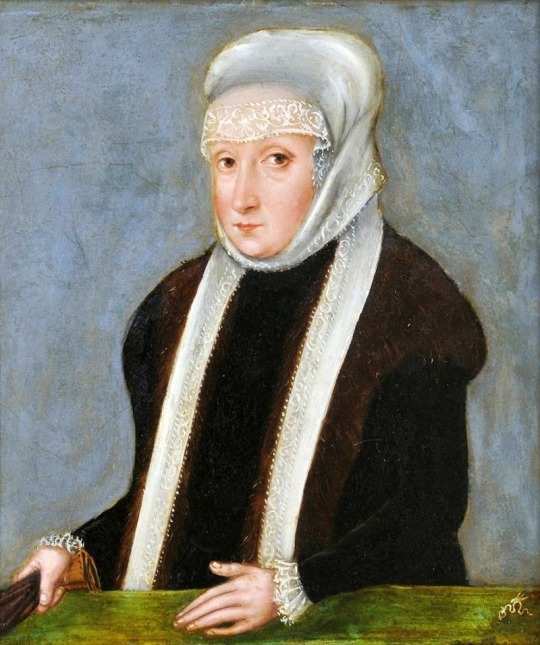
Töregene Khatun
Regente del Imperio Mongol de 1242 a 1246

1 note
·
View note
Text
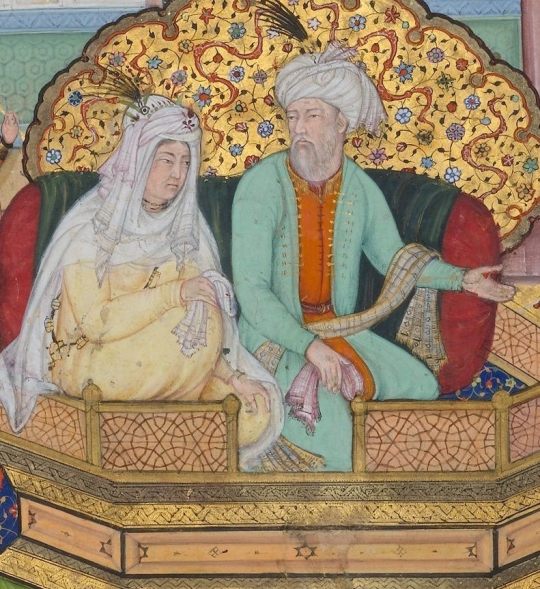

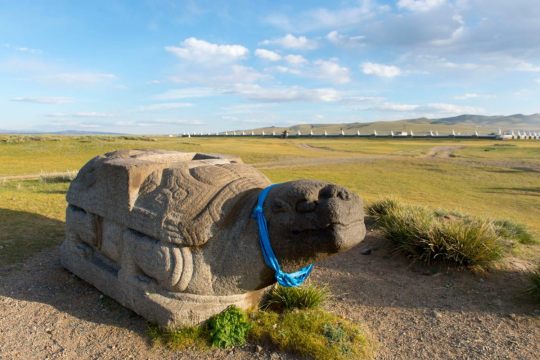
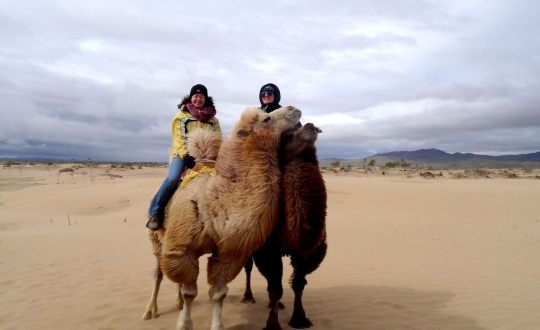
Grand Empress Börte (left) and Genghis Khan, more accurately called Chinggis Khan, from a 16th-century book commissioned by Mughal emperor Akbar the Great, who claimed descent from the khan. The Metropolitan Museum/Public Domain
The Women Who Ran Genghis Khan’s Empire
From fighting in the army to managing the kingdom, women were key players in every aspect of the Mongol Empire.
by Sarah Durn May 26, 2022
In 1178, a 17-year-old Mongol woman married a man she hardly knew. And while her husband traveled and fought and conquered, she ruled those who remained in Mongolia, managing every aspect of daily life in a massive nomadic camp. Commanders and shepherds alike reported to her, and she coordinated complex seasonal migrations of thousands of people and their livestock. At 28, she became the Grand Empress of the Mongol Empire; her name was Börte.
Börte’s husband, Chinggis Khan (also known, based on the Arabic transliteration, as Genghis Khan), receives all the glory for founding the largest contiguous land empire the world has ever known, but Börte and her immense contributions have been largely forgotten. While their husbands fought in distant, years-long military campaigns, Börte and other Mongol women kept the empire running. Some women also rode to war. Khutulun, Chinggis Khan’s great-great-granddaughter, would swoop down on the enemy “as deftly as a hawk,” wrote Marco Polo.
Atlas Obscura spoke with Central Asia scholar Anne Broadbridge, author of Women and the Making of the Mongol Empire, about the many roles women had in the Mongol Empire, how society perceived them, and the rise of perhaps the most powerful woman of the medieval world: Töregene.
What were the responsibilities and tasks of the Mongol women in charge of camps?
The better question would be what weren’t their tasks. I think we could put it all in the general category of management. [For example,] Chinggis Khan’s senior wife, Börte, is responsible for a camp. She’s responsible for their home, the yurt or ger that they live in. She’s responsible for the kids. If merchants come through, she’s going to talk to them about economic activity. She is going to oversee or perform the typical daily herding activities. There’s food preparation. There’s clothing preparation. There are religious rituals. There’s entertainment. It’s often a woman’s job to be the hospitable partner, to bring in food and welcome guests. And then there’s all the thousand and one little things that everyone does every day—mending things, checking in with people, checking on kids, making sure that the kids aren’t fighting too much, etc.
Furthermore, when the camp had to move from point A to point B, which it did regularly according to season and pasture, women were in charge of that. They organized the procession of carts. They’d drive that long line of carts, often drawn by oxen or yaks. When they arrived, they would place the yurts in the correct order, set them up, etc. So without women running the place where Mongols lived, there wouldn’t have been a camp for the Mongol men to return to from their military campaigns.
After Chinggis Khan’s death in 1227, many women rose to power. Why?
Succession is very complicated. But women can take over, in theory temporarily but sometimes not really temporarily, on behalf of some man, usually a son of their own.
So in the case of Töregene, who became regent of the entire Mongol Empire after the death of Chinggis Khan’s son Ögedei, or in the case of Sorghaghtani, who maneuvered her son to be the ruler of the entire empire, they’re functioning as senior widows who are regents for men. That’s perfectly acceptable in (their) nomadic society.
Khutulun, the great-great-granddaughter of Chinggis Khan and a fierce warrior, inspired the 20th-century opera Turandot. Public Domain
How did Töregene become regent of all Mongolia, around the year 1241?
She had remarkable skills. She enters the family in a very disadvantageous position. Chinggis Khan’s army kills her husband and she becomes a trophy wife for the third son of Chinggis Khan and Börte, Ögedei, who succeeds his father as overall Great Khan. Töregene isn’t even the senior wife (but) she produces five living sons. The senior wife produced no children. So sort of by default Töregene rises up. By the time Ögedei himself died, she was in a position to take over as the actual senior wife. So she wrote to all of the senior members of the family when her husband died and said, “Oh my goodness. We have this situation. What shall I do?” They wrote back and said you should be regent until we can get together and decide who will be the next ruler. So she worked the system very well in her own favor.
Ögedei, her dead husband, had a preference for who should be the next Great Khan. Töregene had a different preference. She wanted her oldest son to be Khan. And so at this big general assembly that she called and hosted and paid for, she managed to lobby successfully for her son to take over—even though this was in opposition to her dead husband’s express will.
A 13th-century stone turtle marks the site of Karakorum, the Mongol Empire’s capital, built in 1235 by Ögedei Khan. After his death, his wife Töregene ruled from here as regent. Wolfgang Kaehler/Getty Images
What was Mongol society’s perception of these powerful women?
We don’t have much [historical material from the Mongols], but what we do have implies acceptance. This is the way things are. Women have authority. They do certain things. You check in with them. You ask their advice. You listen to them when they speak. This is normal. So although outside observers see the amount of authority that some women have in these societies as unusual, for people living in those societies it was normal.
Did Mongol women fight in armies?
[Historians] have indeed found evidence that more than we thought of the Mongol armed forces were, in fact, women—maybe as much as 20 percent. We’re not talking half, but they were there.
What would you like the world to know about Mongol women?
I want people to know how much they mattered. They’re half the story at least. Without Mongol women, there would have been no Mongol conquest, no Mongol empire. There would have been nothing. In Mongol society, you have something like 90 percent of men able to mobilize and engage in warfare. No other contemporary society—not medieval China, not medieval Iran, not medieval Europe—can do that, because men have to do other jobs. They have to be priests, farmers, administrators. In Mongol society, women do all of that stuff. So without women behind the scenes running everything else, men would not have gone anywhere.
This interview has been edited for length and clarity.
-https://www.atlasobscura.com/articles/mongol-empire-women?utm_source=pocket-newtab
In Atlas Obscura’s Q&A series She Was There, we talk to female scholars who are writing long-forgotten women back into history.
Keep Exploring
Royalty The Forgotten Women Who Ruled the Medieval Middle East A new book tells the tales of the queens of Jerusalem. Sarah Durn
vikings 6 Epic Female Warriors You Don’t Want to Mess With From California’s mythic warrior queen to the swole women of Sparta to female hunters in ancient Peru. Sarah Durn
ancient cults The Most Lavish Mesopotamian Tomb Ever Found Belongs to a Woman And her clothing tells an important story, says archeologist Rita Wright. Sarah Durn
pyramids Remembering the Remarkable Queens Who Ruled Ancient Nubia Scholar Solange Ashby is uncovering the once-revered, now little-remembered female leaders of the Kushite kingdoms. Sarah Durn
1 note
·
View note
Text
Ögeday Han kimdir? Töregene Hatun kimdir?
Ögeday Han kimdir? Töregene Hatun kimdir?
Ögeday Han kimdir? Töregene Hatun kimdir?
Ögeday 7 Kasım 1186’da Cengiz Han‘ın üçüncü oğlu olarak dünyaya gelmiştir, annesi Börte’dir. 17 yaşına geldiği zaman babasının Jamuka ile olan savaşlarından bir tanesinden ağır şekilde yaralandı ve savaş alanında kayboldu. Babası ve amcası olan Borokhul onu kurtarmaya muvakkaf olmuştu.
Ögeday Han kimdir? Töregene Hatun kimdir?
Töregene Hatun ya da…
View On WordPress
0 notes
Text
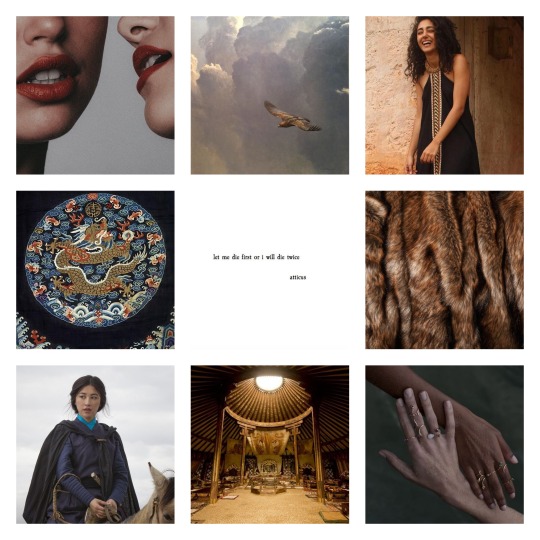
my historical OTPs: töregene khatun/fatima;
"fatima (died 1246), was a senior office holder in the mongol empire of the thirteenth century and originally a captive shiite muslim who was deported from the shiite shrine of meshed to mongolia. she became the favourite of empress töregene khatun.
after the death of ögedei khan ... in the spring of 1242, töregene khatun assumed complete power as regent ... her most important cabinet member was fatima.
in 1246, töregene's son güyük khan came to power ... güyük's brother koden accused fatima of using witchcraft ... [and] when koden died ... güyük insisted that his mother hand fatima over for execution. töregene refused [to hand fatima over] and threatened her son güyük that she would commit suicide.
despite this, güyük's men seized fatima, tortured her, and executed her ... töregene's supporters in the imperial household were simultaneously purged. within 18 months of fatima's death, töregene herself died under still unexplained circumstances."
#töregene x fatima#töregene khatun#fatima x töregene#fatima#femslashrevolution#historical femslash#femslash#mongol empire#13th century#tw death#myhistotps#mypost#thank u wikipedia
33 notes
·
View notes
Photo
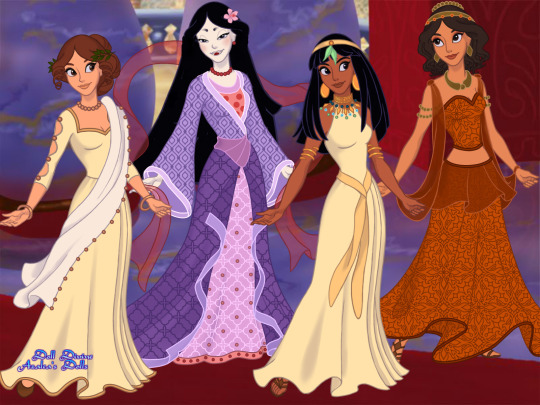
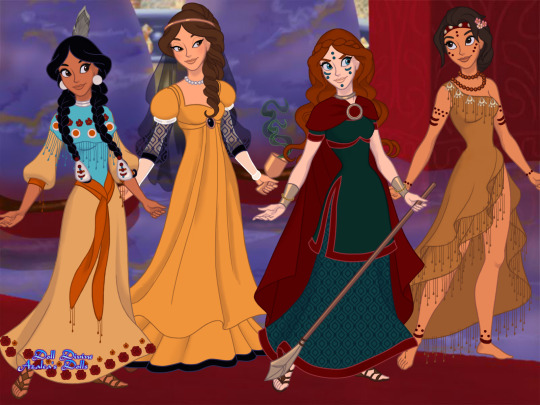
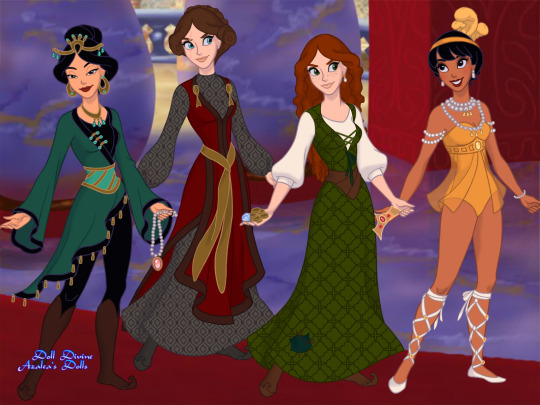

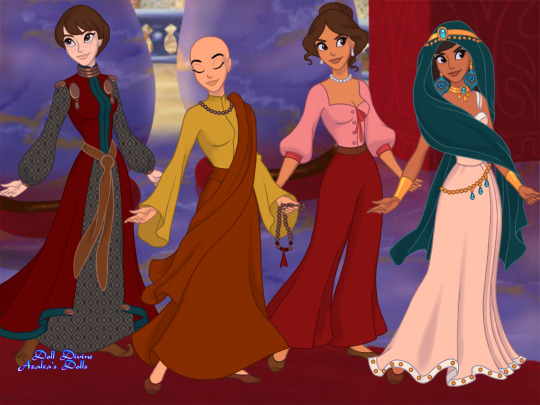



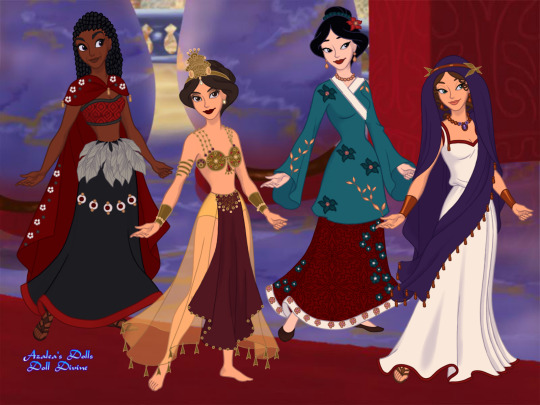
Historical Women
1. - Hypatia (Hellenistic philosopher, astronomer, and mathematician)
- Murasaki Shikibu (Author of the world’s first novel)
- Peseshet (Earliest known female physician)
- Enheduanna (Earliest recorded poet)
2. - Sacagawea (Lehmi Shoshone guide of America)
- Giulia Tofana (Poison Maker)
- Boudicca (Rebel queen of the Iceni tribe)
- Pocahontas (Powhatan “civilised savage”)
3. - Ching Shih (Prostitute turned privateer queen)
- Jeanne De Clisson (Lioness of Brittany)
- Grace O’Malley (Irish pirate)
- Josephine Baker (French rebel spy and activist)
4. - Tirgatao (Rebel Princess who refused to stand down)
- Julie D’Aubigny (Bi, sword-fighing opera singer)
- Olga of Kiev (Russian queen of revenge)
- Harriet Tubman (Freed enslaved Americans)
5. - Joan of Arc (French rebel turned saint)
- Ani Pachen (Tibetan monk freedom fighter)
- Luisa Capetillo (Puerto Rican Trouser-wearing labour leader)
- Zenobia (Syrian queen conquerer)
6. - Æthelflæd (Lady of The Mercians)
- Ada Blackjack (Iñupiat guide and wilderness survivor)
- Artemisia Gentileschi (Master painter and r*pe survivor)
- Töregene Khatun (Mongol Khatun and conqueror)
7. - Nakano Takeko (Samurai who died protecting her family)
- Nzinga (Queen of Ndongo and Matamba)
- Sarla Thukral (First Indian woman with a pilots licence)
- Sappho (Ancient Greek lesbian poet)
8. - Hatshepsut (Egyptian Pharaoh whose name was almost erased)
- Theodora (Empress of the Byzantine Empire)
- Lozen (Spiritual leader and warrior of the Chiricahua Apache)
- Wu Zetian (Tang Dynasty Empress Regnant)
9. - Mkabayi kaJama (Zulu Princess who kept her country running)
- Mata Hari (Scapegoat of WWI)
- Wang Zhenyi (Astronomer and poet)
- Agrippina the Younger (Mother of an empire)
4 notes
·
View notes
Video
youtube
chief adviser Yelu Chucai Mongol Empire tax knee arrow captured poor and clergy from taxes encouraged literacy free religion Shah Jahan Taj Mahal heavy wooden gate Töregene Khatun Iranian Plateau thumb Khutulun pollute most successful biological father in human history half-brother Bekhter food Mongol Invasions fifth
0 notes
Text
Interesting historical manga I've found
Anna Comnena is a comedic four-panel manga by Futaba Sato about the titular princess and historian of the Byzantine Empire.
Aoi Horus no Hitomi is a gorgeous manga by Chie Inudoh about Hatshepsut's life and struggles as the female pharaoh in the 18th Dynasty of the New Kingdom. Licensed in French by Ki-oon, in Chinese by Tong Li Publishing, in Polish by Studio JG, in Korean by 영상출판미디어 (I can't find their official English name), and in Italian by Edizioni BD.
Blissful Land is a slice-of-life manga by Ichimon Izumi about a young doctor-in-training who finds himself engaged to a foreign girl in 18th-century Tibet. Licensed in English by Kodansha Comics, in Polish by Studio JG, in Spanish by Milky Way Ediciones, and in French by nobi nobi!.
Kuranishi has written two manga series set in Tibet: Ruten no Terma stars a Japanese man in search of his missing brother in modern Tibet while Tsuki to Kin no Shangri-La/Shangri-la for moon & diamond stars a young boy who is mysteriously left by his father at a Tibetan temple.
Tenmaku no Ja Dougal/A Witch's Life in Mongol by Tomato Soup is about an educated slave girl named Sitara who is taken prisoner of war by the Mongolian Empire when Prince Tolui's army sacks her first mistress Fatima's town in Islamic Iran. Taking the name of her first mistress, Sitara becomes a lady-in-waiting to Sorghaghtani, who happens to be Tolui's wife, and has a fateful encounter with Töregene, Ögedei's resentful wife from a defeated enemy tribe.

Vlad Drăculea by Akiyo Ohkubo depicts Vlad III's life as he goes from the puppet monarch of Wallachia to the feared defender of the land against the Ottoman Empire. This manga stands out for its subdued aesthetics and aversion of Big Anime Eyes. Licensed in French by Editions Soleil.
16 notes
·
View notes
Text
Scar has a lot more personality and empathy in his first appearance in Fullmetal Alchemist than Fatima and Töregene do in Volume 2 of A Witch's Life in Mongol.
1 note
·
View note
Text
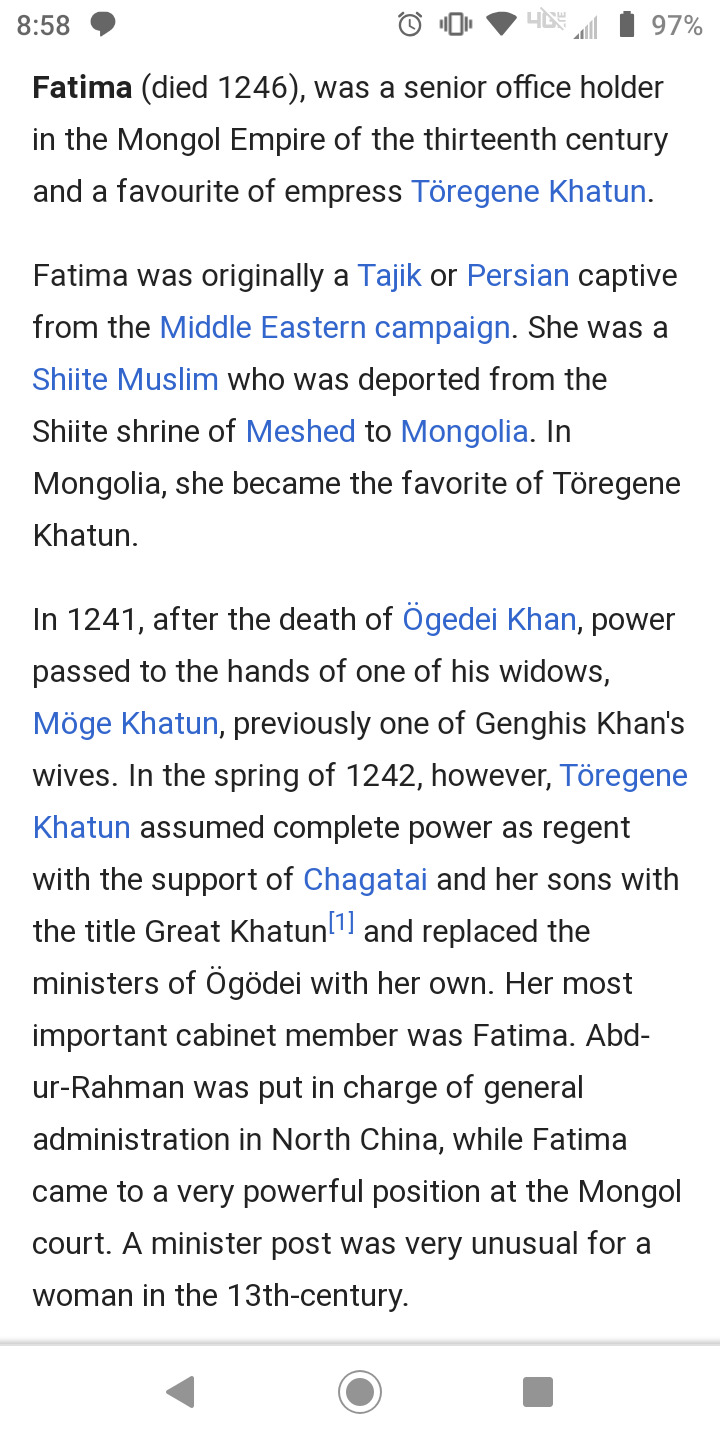
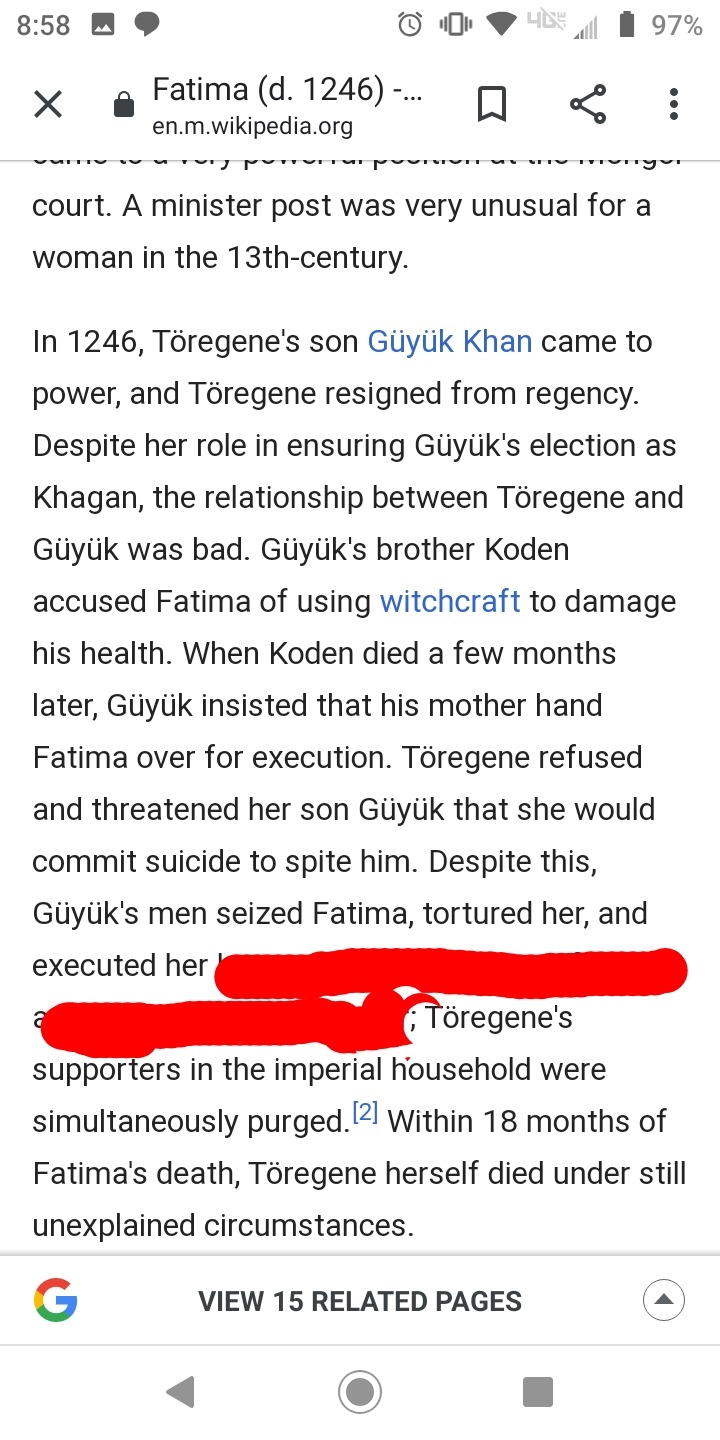
the way they murdered her is [redacted] bc it was too horrible for me to look at but like anyways........... gay
#fatima x töregene#töregene khatun#töregene x fatima#fatima#femslashrevolution#femslash#historical femslash#mypost#wikipedia#13th century#mongol empire
8 notes
·
View notes